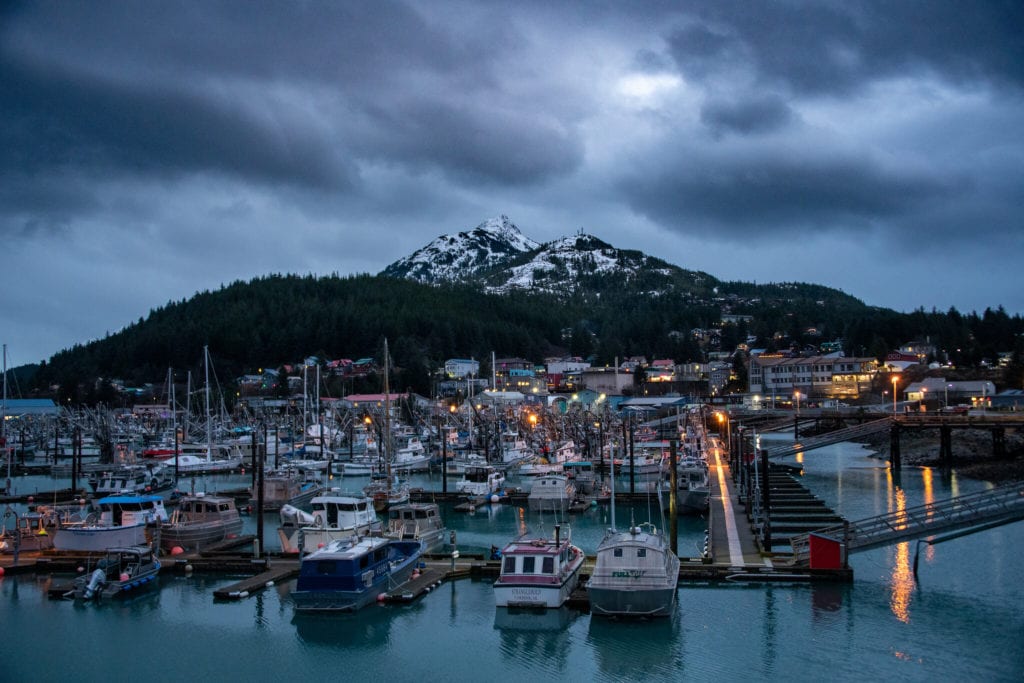
A long delay commercial fishermen, processors and communities have experienced in getting disaster relief checks for the Gulf of Alaska pink salmon disaster of 2016 is getting longer, but there may be an end in sight.
This time the decision is delay payments is due to concerns that some eligible crew members may have been excluded, as only two-thirds of permit-holder applications reflecting crew participation were returned to the Pacific States Marine Fisheries Commission.
Rep. Louise Stutes, R-Kodiak, met with Alaska Commissioner of Fish and Game Doug Vincent-Lang during Pacific Marine Fish Expo in Seattle in late November to discuss ways to speed up the process.
“We talked about the situation,” Stutes said. “He is quite aware of the situation. I feel he will do everything he can to expedite the payments and pay the claims that are not questionable in a timely fashion.”
ADF&G, in coordination with the PSMFC and National Marine Fisheries Service, determined in November that a delay in payments to CFEC permit holders was needed to ensure that the agencies have enough information on crew participation before making the payments. Officials specifically wanted to address data limitations and federal funding distribution requirements and to ensure payments were distributed equitably among all eligible participants, Vincent-Lang said in a letter to Stutes.
That step was taken because the number of crew reported on CFEC permit holder applications proved substantially less than anticipated. The PSMFC had distributed 1,318 applications to CFEC permit holders and received only 865, or 66 percent by the application deadline, he said.
“We have also heard directly from several crew members with concerns about the accuracy of crew share information submitted on a CFEC permit holder’s application,” Vincent-Lang said.
While he agrees that this situation may be attributable to confusion concerning the application and appeals process rather than deliberate misreporting, the agency is also faced with the challenge of determining appropriate disaster relief crew payments if the CFEC permit holder did not submit their name on an application or if the crew member disputes the crew share amount submitted by that CFEC permit holder, he said.
ADF&G’s ability to address this situation is primarily constrained by two requirements for processing and approving payment applications. For the pink salmon disaster, documentation from eligible CFEC permit holders and crew must attest to the person’s eligibility to receive disaster funds. Since neither ADF&G or CFEC collect data on crew participation in specific fisheries, they have to rely on CFEC permit holders to provide crew names and contact information and on crew themselves to apply for payment and confirm or dispute their crew share on the permit holder application.
Many permit holders in the Prince William Sound area didn’t even qualify in the first place, because of the formula that looked at the applicants’ five even year catch of pink salmon.
In Prince William Sound, a good portion of the fleet started out as drift gillnetters and then bought seine permits to diversify, said Chelsea Haisman, executive director of Cordova District Fishermen United.
That meant if a harvester caught few pinks in one or more years in the drift gillnet fleet, where the catch is not focused on pink, then the harvester’s low catch of humpies during the disaster year would not show a significant loss of pinks in 2016.
“If you had a low number of pinks in even years 2014 and 2016 and a lot of salmon in the drift gillnet catch in 2018, you would not qualify,” Haisman said.
Because the process dragged on for so long, it is also possible that captains had a hard time contacting crew if their addresses changed, she said.
The quest to get financial relief for those hard hit economically began in late 2016, when then Gov. Bill Walker asked, and Congress approved, $56 million in disaster funds for seven management areas of the Gulf of Alaska, including Kodiak, Prince William Sound, Chignik, Lower Cook Inlet, South Alaska Peninsula, Southeast Alaska and Yakutat.
The Alaska Department of Fish and Game, working with NOAA Fisheries, then devised a draft spending plan, allocating $32 million for eligible harvesters, based on their five even year averages; $17.7 million for processors, plus funding for salmon research, municipalities affected by the disaster were to divvy up $2.4 million.
On Nov. 20, Stutes wrote to Vincent-Lang asking that ADF&G reconsider its decision to delay payments until after the Jan. 31 crew application deadline.
The legislator said it was her understanding the process was on hold due to a systemic underreporting of crew that, in her opinion, was due more to a poorly designed process than pervasive dishonesty or omissions among permit holders. The most serious issue, she said, appears to be a direct symptom of the application, appeal and distribution process running in sequential order instead of congruently. Or to put it simply, committing funding before ADF&G had the necessary information, she said.
In cases where no red flags exist and a normal number of crew are listed on the CFEC application, contact the crew, confirm what is on the application, and barring a discrepancy, put the application in the approved file, which will lead to faster resolution, she said. Keep in mind that in some cases, a few phone calls might confirm information the department requires, she said.
Stutes also reminded the commissioner that this was hardly the first delay in this process.
“Now, shortly before Christmas and after over three years of waiting, ADF&G is asking permit holders to wait at least an additional three months” she said. “My constituents have already made significant budgeting and tax decisions, shipyard appointments, or simply cannot afford to wait any longer,” she said.
Vincent-Lang acknowledged her suggestions, including redirecting ADF&G staff to review applications and provide partial payments to CFEC permit holders while the crew application process is completed. He said ADF&G would consider her suggestions and work with the PSMFC to determine if the collecting of crew data could be expedited.





